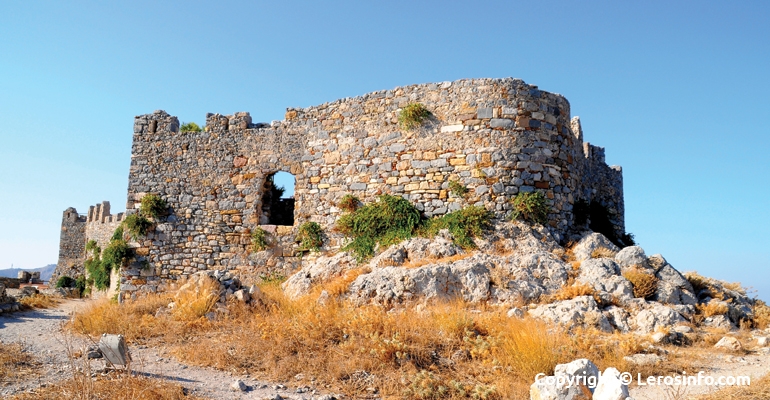Leros is known as the island of Artemis and history has preserved an important role for ii since antiquity. Its strategic geographical position has granted Leros a historically rich past. The first traces of inhabitation were found at Partheni and Gourna, dating to the Neolithic period (4th millennium B.C.). During the 5th century Leros developed close commercial, political and intellectual links with the Ionians of Miletos and blossomed intellectually as a result of influences from such cultural ancient heroes as the satirical poet, Dimodikos and the historian, Pherekydes. The island of Leros became part of the Athens Alliance following the Persian Wars and there is evidence that it was visited by great and wealthy persons. During the Byzantine period, many magnificent Christian churches were built as well as the castle and the Panayia church on the hills overlooking what is now Platanos. A further castle of Lepides, was also built and its ruined walls can still be seen, as well as many other outstanding Byzantine monuments such as the early Christian church at Partheni. In 1314, Leros was occupied by the tyrannical Knights of St. John of Rhodes, who governed it despotically until 1521. During the Turkish occupation, they managed to hold on to an element of autonomy and later, when the Greek Revolution broke out, some of the people of Leros were the first to resist their oppressors. From 1912 to 1943, the island was occupied by the Italians and during this time, the intention was to develop Leros into an Italian naval base. Over several decades important defence work was carried out and military installations built with a new deep sea port created at Laki. Many buildings were demolished and in their place grand buildings were erected in the then, new, modern infrastructure and architecture, which was a pioneer of its kind for the whole of Europe. During World war two, the Germans, who had already captured Rhodes and Kos, turned their sights onto Leros, which was defended by Italians and Britons. On September 26th the Greek destroyer ‘Vasilissa Olga’ was the first victim of the Battle of Leros. However, after almost 50 days of bombardment from German air raids, the Germans went on to occupy the island until the end of the war in 1945. This was further followed by a two year occupation by English armed forces, which culminated in March 1948, with Leros and the whole of the Dodecanese finally being united with Greece.
During the island’s most recent history, Leros had been used as a place of incarceration for political prisoners who were imprisoned at either of the camps at Lakki or Partheni by the military police during the dictatorship from 1967 to1974. Further, in 1957 Leros was chosen as the site of the state psychiatric hospital which was built to relieve the congestion in other Greek psychiatric hospitals. Since 1989, Leros has been implementing programmes for de-institutionalisation and patient psycho-social rehabilitation.




